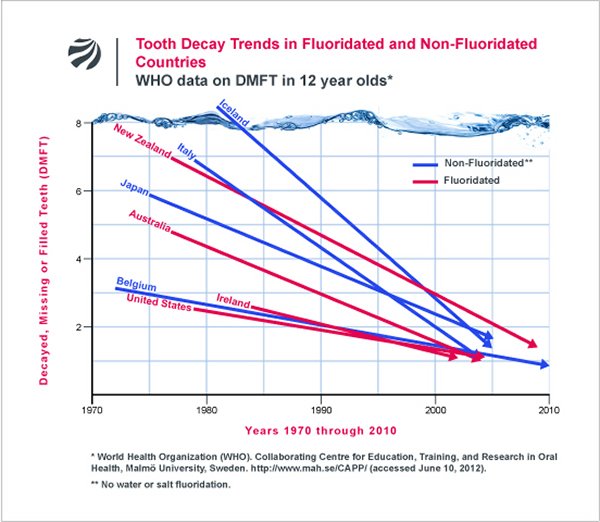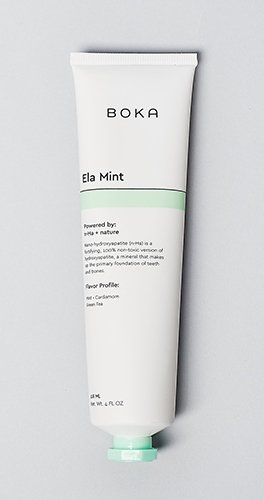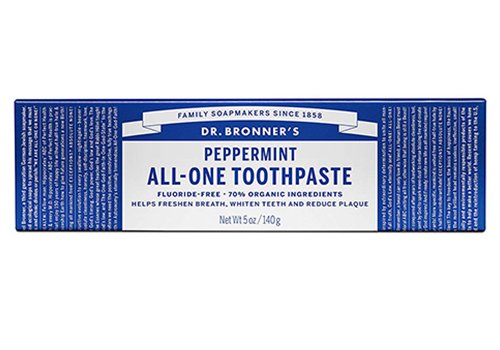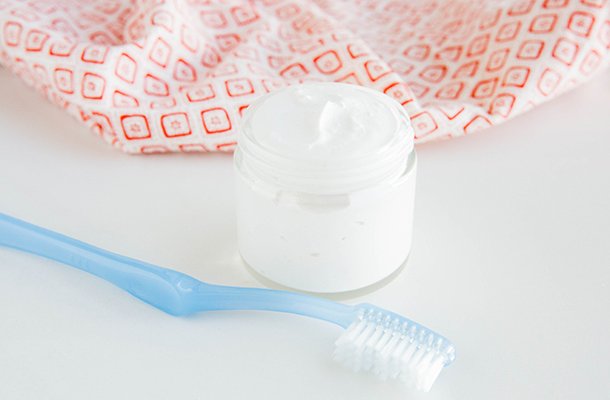Fluoride and IQ: Does prenatal exposure to fluoride lower IQ?
Disclosure:
Ask the Dentist is supported by readers. If you use one of the links below and buy something, Ask the Dentist makes a little bit of money at no additional cost to you. I rigorously research, test, and use thousands of products every year, but recommend only a small fraction of these. I only promote products that I truly feel will be valuable to you in improving your oral health.
One of the controversial topics every parent has to contend with is fluoride intake. And with new research bringing up more questions than answers, the connection between fluoride and IQ is all but indisputable.
A 2017 study published in Environmental Health Perspectives has linked exposure during pregnancy to reduced IQ in those children later in life. (1)
This comes on the heels of dozens of other studies that seem to suggest fluoride impacts the development of the brain and human intelligence.
In this article, we’ll review what this study means for you and your baby.
New Findings on Prenatal Fluoride and IQ
A US government-funded study was released on September 19, 2017 to examine the relationship between a mother’s exposure to fluoride and the child’s cognitive development.
Researchers found that low levels of fluoride intake during pregnancy are linked to significantly reduced IQ in those children later in their life.
The study took other factors into account and made sure to establish controls, such as socioeconomic status, smoking, marital status, age, etc.
Researchers measured the amount of fluoride present in the urine of the pregnant participants. Levels in the urine are an extremely accurate indicator of total fluoride intake.
Years later, the researchers measured the intelligence of the children born to these women by giving them an IQ test. At age 4, and then again between 6-12 years, IQ levels were significantly lower in children exposed to higher levels of fluoride in utero. (1)
This is the only high-quality study with controls that has tested prenatal fluoride and IQ, so the results need to be replicated to be sure.
However, it’s true that fluoride passes through placenta to baby’s blood. (2)
Therefore, any fluoride a pregnant mother is ingesting would also reach the unborn child.
In the study, which was conducted in Mexico, the level of exposure is probably close to the level we are exposed to in our fluoridated water.
Do these results actually apply in the United States?
The biggest difference between the communities in Mexico and the US water supply is that the fluoride in Mexico is naturally occurring, not added.
At first glance, you might think that doesn’t matter. And maybe it doesn’t.
But you should also know that calcium fluoride, which is naturally occurring in groundwater (like in Mexico), isn’t what’s in your water.
Neither is sodium fluoride, in nearly every one of the 75% of communities in the United States with fluoridated water. That’s what it used to be, but since the 1990s, things have changed—although pharmaceutical grade sodium fluoride is still found in toothpaste.
Actually, the main source of fluoride in water is hydrofluorosilicic acid (HFS).
Before it was put in your water, HFS was designated as a toxic chemical produced when fertilizer is made. Companies were fined for dumping it into public water supplies.
Then, someone in government had an idea: What if we pay companies to put HFS in the water instead?
I know that sounds dramatic, but it’s pretty straightforward, unfortunately.
Unlike calcium fluoride or sodium fluoride, HFS contains arsenic and leeches lead from old piping. (3, 4)
There are no known “safe” levels of exposure to either arsenic or lead. (5, 6)
Other Research on Fluoride and IQ
A lot of studies exist that support the idea fluoride has a negative impact on cognitive development.
Here are a few of the major ones:
Developmental Fluoride Neurotoxicity: A Systematic Review and Meta-Analysis
Researchers from the Harvard School of Public Health reviewed 27 studies through the year 2011 about fluoride and IQ. (7)
They found that the results were statistically significant: ingestion of fluoridated water seems to correlate with lower IQs in children.
Overall, high fluoride exposure equated to an drop in average IQ by seven points. This qualifies fluoride as a neurotoxin.
What’s missing: Their analysis was limited to areas with higher levels of naturally occurring fluoride that exceeds most fluoridated communities in the US. The “low level” control areas of exposure were actually closer to levels of fluoride in the US, which is why Snopes said the study was misused by people claiming fluoride lowers IQ.
These studies also didn’t control for as many factors as they probably should have, which makes the results somewhat unclear.
The writers of the study said that more research should be done that also tests urine fluoride levels over time and the differences between socioeconomic status.
Why the results matter: In the United States, you’re exposed to fluoride through much more than drinking water. Processed foods and produce treated with certain pesticides (both of which are consumed in lower numbers in most of the communities in the study) contain fluoride, too.
Plus, this review was conducted by Harvard scientists. The institution where research comes from is important, because it speaks to the quality of the science.
Association of lifetime exposure to fluoride and cognitive functions in Chinese children: a pilot study.
Another Harvard-based study was conducted in China and published in 2015, studying what happens to the brains of children exposed to fluoride. (8)
This pilot study found that children with moderate to severe fluorosis had more issues with cognition than children with no fluorosis.
What’s missing: Levels of fluoride in Chinese groundwater are typically higher than in the US.
This study only examined 51 children, which is not a large sample size to make big conclusions.
Why the results matter: When tested on culture-appropriate intelligence scales, kids with fluorosis got lower scores. Since there’s no way to effectively determine how much fluoride a child ingests (particularly in a Western country), the fact that scientists don’t know the dosage of fluoride that causes intelligence deficits is pretty concerning.
Effect of fluoridated water on intelligence in 10-12-year-old school children
A 2016 study in India looked at the same type of correlation between fluoride and IQ and came up with similar results to other studies. (9)
The more fluoride the students were exposed to every day, the lower their IQ.
What’s missing: As with many other studies, the low levels of fluoride were correlated with what normal levels already exist in most United States drinking water.
Why the results matter: Like with the study in China, there is no way to effectively determine if children in the US have the same amount of fluoride in their system as those in the study. At least on some level, fluoride does influence IQ when ingested via water.
Community Water Fluoridation and Intelligence: Prospective Study in New Zealand
This is the only study on my list that found no relationship between fluoride and IQ levels.
In New Zealand, over 1,000 people were followed between the ages of 7-38. The study authors investigated the link between fluoride and childhood IQ, finding no significant connection. (10)
What’s missing: In the next issue of that journal, dentist Bill Osmunson published a response to the New Zealand study. (11)
He found two major issues—first, in New Zealand, children in non-fluoridated communities are encouraged to take fluoride supplements. But the study didn’t compare total fluoride exposures, just who was exposed to community fluoridation.
Osmunson calculates that actual exposure to fluoride was only different by about two-tenths of a point. That could possibly account for why no IQ difference was found—fluoride exposure was essentially the same between groups.
Then, the scientists didn’t control for 11 of the 15 variables they themselves criticized other studies for not controlling.
These included things like:
- Other toxins in the non-fluoridated water, which include very high levels of lead and copper (Osmunson claims the lead alone could account for a 4-point difference in IQ levels)
- Maternal (mother’s) IQ
- Socioeconomic status
Why the results matter: There are issues with this study, as with the others, but this study covers more children than the majority of others on the topic.
If the variables above could be controlled, the results might be different, but it’s also possible that the results are still accurate. We can’t know without more research.
Further research—Fluoride & IQ: The 53 Studies (Fluoride Action Network)
Does fluoride actually work? Doesn’t my child need it?
But what about the easiest (but still fairly controversial) question: does fluoride work to prevent cavities?
To answer this question, you have to know what you’re actually asking. Do you want to know if topical fluoride works, or if ingested fluoride works?
Does topical fluoride prevent cavities?
Yes, topical fluoride strengthens tooth enamel to prevent cavities. Using fluoride toothpastes and treatments can aid in the natural remineralization process and help to reverse or prevent cavities.
The fluoride ion and the calcium ion are very similar—they’re only one electron different. The enamel and dentin of your natural teeth are made up of many calcium ions.
A fluoride ion is actually more bioavailable than dietary calcium, so teeth and bones will uptake this fluoride to rebuild the tooth’s structure. This is good for decay because the fluoride ion is more resistant to acid than the calcium ion.
Cavities occur when bacteria feed the acid in your mouth and cause “acid attacks” that weaken and destroy your enamel and, eventually, dentin. Most often, this happens when you eat meals with a lot of starchy carbohydrates, like breads, pastas, crackers, and the like.
Since fluoride is very acid-resistant, it’s less likely to break down when exposed to acid.
Does ingested fluoride prevent cavities?
The answer to this depends on who you ask.
The American Dental Association (ADA) thinks it does.
So does the Centers for Disease Control & Prevention (CDC).
Oh, and don’t forget about The American Academy of Pediatrics.
But the Cochrane Library, one of the most trusted organizations for scientific reviews, isn’t so sure, according to their 2015 systematic review. (12)
They explain that, while some studies suggest that it reduces childhood cavities, the majority of these studies can’t really be taken at face value.
The problem is that since fluoridation was introduced, many other societal changes may be contributing to people getting less cavities, like:
- Ease of access to fluoride toothpastes (which contain anywhere from 1000 to 7000 times the amount of fluoride than found in water)
- Access to quality dental care
- Public health initiatives to educate people on the importance of dental health and cavities prevention
Plus, it takes two minutes of brushing with fluoride toothpaste to reap the benefits of topical fluoride.
The seconds tap water touches your teeth is minimal, at best, and the fluoride in that water is there in tiny amounts compared to toothpaste. Logic, then, tells me that fluoridated water is probably contributing very little to any decrease in dental caries.
However, too much ingested fluoride can actually weaken the structure of teeth from the inside.
In the past, I have recommend the use of fluoride in certain instances when used the correct way.
We’re exposed to a lot of fluoride in our environment—it is naturally present to some extent in water, other beverages, infant formula, and even the food we eat. What may have been a well-intentioned idea is resulting in far too much fluoride exposure and even fluorosis.
I also find the information compiled here by the Fluoride Action Network to be very interesting.
According to the best available data, cavity occurrence has gone down at similar rates in fluoridated and non-fluoridated communities.

However, these results are contested in a 2018 review that claims non-fluoridated communities have no way other than fluoride to control cavities. (13)
A recent look at the state of cavities in Juneau, Alaska did find that children had about one more cavity before their 18th birthday when fluoride was removed from the water. (14)
One cavity doesn’t sound like a lot, but if you’ve ever had to endure a filling or root canal with a scared child, you know it’s a big deal.
I don’t believe these results are sufficient to end the debate, though. There are still a great deal of anti-cavity efforts parents and children can make that don’t involve a toxic chemical.
Here’s what it all comes down to for me: I would rather my child develop one more cavity, if that truly is the statistical risk, than expose them to a chemical associated with problems like IQ deficits and even bone cancer.
What’s the Big Deal with Fluoridated Water? Is fluoride bad for you?
I cover a lot of the possible dangers of fluoride in my article on fluoride facts, but here are the basics about fluoride dangers for expectant mothers:
Ingested fluoride crosses the placenta to your fetus.
While your baby’s growing s/he’s nourished by what you eat and drink. Unfortunately, fluoride is able to pass through your placenta and across the blood-brain barrier of your developing child. (2)
If you choose not to (or can’t) breastfeed, your baby will get more fluoride exposure while very young.
I’m a huge proponent of breastfeeding, but it’s not always an option for new moms.
Formula, generally made with fluoridated water, contains about 1.5-2 times the amount of fluoride found in breastmilk.
It’s basically impossible to remove every fluoride exposure in your child’s life–and I’m not suggesting you try.
But it’s a good idea to make other efforts to reduce fluoride in your life, particularly if you feed with formula.
Ingesting fluoride can cause dental fluorosis.
About 12% of children who drink fluoridated water end up with fluorosis, and many of these people are stuck with mottled brown teeth as adults, too. (12)
While this is the only danger of fluoride admitted by major governmental organizations, fluorosis is thought to be cosmetic, not functional. However, fluorosis reveals fluoride exposure, so it’s a sign of an underlying problem.
I’m pregnant or trying to get pregnant—what should I do?
Here are a few ways you can limit fluoride exposure for your growing little one.
1. Change toothpastes
If you or your partner are pregnant and you’d like to reduce your baby’s exposure to fluoride, start with a different toothpaste.
My favorite non-fluoride toothpaste for reversing cavities is Boka’s Ela Mint Toothpaste.
It’s made with nano-hydroxyapatite (NHa) particles that remineralize your teeth as effectively (or more) than fluoride. (15, 16)
Don’t have cavities? Try Dr. Bronner’s Peppermint Toothpaste for an all-natural, fluoride-free experience.
You can also try making a DIY toothpaste like this one:
2. Get a water filter that gets rid of fluoride
Most conventional pitcher and spigot filters don’t filter out fluoride with other particles. For one, filtering fluoride sometimes requires the use of silver, which I don’t recommend.
However, there are a few great options you might want to try.
Best option: Reverse osmosis filter
Reverse osmosis filtration gets rid of the majority of fluoride particles in your water. If money isn’t an object and you’d like to get rid of fluoride in your house altogether, a reverse osmosis filter on your water system is the way to go.
Just be aware that a full-house filter like this may use quite a bit more water in order to produce toxin-free water. It also removes useful minerals from your water that your teeth (and bones) need to function the right way.
How much does a whole house reverse osmosis system cost? Depending on where you live, it could be upwards of $12,000-18,000 to install.
Not looking to take out a new mortgage to ditch the fluoride? That’s okay—you can try a countertop reverse osmosis filter, or an under-sink filter for the kitchen sink.
Both of these options cost between $150-500. Here’s a countertop model and under-sink one I like:
Least expensive option: ZeroWater Filter Pitcher
There’s only one filter pitcher I’ve seen that eliminates fluoride, and it’s from ZeroWater. Their 5-step filtration process gets rid of over 99% of the dissolved solids in tap water, including fluoride.
Although I’m listing it as a budget option, it’s also the simplest choice to replace fluoridated drinking water—it requires no installation or counter space.
3. Make easy dietary swaps
Being an expecting mother can be a challenge—one reason being that it seems there’s a ton you can and can’t eat!
However, the changes you can make that help your body detox fluoride are fairly hassle-free.
Eat alkaline: Normally, you excrete about 50% of the fluoride you ingest. Eating a diet with lots of alkaline foods (read: colorful, leafy, non-starchy veggies) bumps that up, so you don’t hang onto as much fluoride.
Try tamarind tea: You may need to order it online, but this popular Indian tea might be able to get some fluoride out of your system. (17)
Drink bottled water instead of tap water: The general rule is that all bottled water is free of fluoride—if not, the label has to tell you it contains fluoride. While there are other issues that accompany bottled water, this is one easy swap to make.
Go organic: A lot of pesticides used on non-organic foods are made with high fluoride content. Try getting organic produce as much as possible.
Ditch the processed foods: Boxed, processed foods frequently contain a lot more fluoride than you might expect. Try a more whole foods diet if you can.
Final Thoughts on Fluoride and IQ
A growing body of research tells us that fluoride exposure may influence childhood IQ.
The newest major study on the topic was conducted in Mexico. Scientists found that prenatal ingestion of fluoride directly correlated to a drop in IQ for the children throughout the first 13 years of life.
Plus, there’s a lot of conflicted evidence about whether or not you (or your little one) actually need fluoride at all.
I personally raised my daughters fluoride-free as much as possible—and not a single one got a cavity!
If you’re pregnant or trying to get pregnant, there are some ways you may want to reduce your fluoride exposure and detox the fluoride in your system:
- Change toothpastes
- Get a water filter that gets rid of fluoride
- Make easy dietary swaps
-
- Eat alkaline
- Try tamarind tea
- Drink bottled water instead of tap water
- Go organic
- Ditch the processed foods
As a new parent, it can be overwhelming to sort through what’s safe and what isn’t. When it comes to fluoride, it can be a pretty easy fix—and one that will give you some peace of mind for your little bundle of joy!
read next: Fluoride Pros and Cons: Is Fluoride Safe?References
- Bashash, M., Thomas, D., Hu, H., Martinez-Mier, E. A., Sanchez, B. N., Basu, N., … & Liu, Y. (2017). Prenatal fluoride exposure and cognitive outcomes in children at 4 and 6–12 years of age in Mexico. Environmental health perspectives, 125(9). Full text: https://ehp.niehs.nih.gov/doi/10.1289/ehp655
- Reddy, P. Y., Reddy, K. P., & Kumar, K. P. (2011). Neurodegenerative changes in different regions of brain, spinal cord and sciatic nerve of rats treated with sodium fluoride. Journal of Medical & Allied Sciences, 1(1), 30. Full text: http://jmas.in/sites/default/files/articles/Neurodegenerative%20changes%20in%20different%20regions%20of%20brain%2C%20spinal%20cord%20and%20sciatic%20nerve%20of%20rats%20treated%20with%20sodium%20fluoride.pdf
- Hirzy, William. (2013). Citizens Petition in re: Use of Hydrofluosilicic Acid in Drinking Water Systems of the United States. Retrieved from: https://www.epa.gov/sites/production/files/documents/tsca_21_petition_hfsa_2013-04-22.pdf
- Maas, R. P., Patch, S. C., Christian, A. M., & Coplan, M. J. (2007). Effects of fluoridation and disinfection agent combinations on lead leaching from leaded-brass parts. Neurotoxicology, 28(5), 1023-1031. Abstract: https://www.ncbi.nlm.nih.gov/pubmed/17697714
- Environmental Protection Agency (EPA). (2001). Technical fact sheet: final rule for arsenic in drinking water. Retrieved from: https://nepis.epa.gov/Exe/ZyPdf.cgi?Dockey=20001XXE.txt
- World Health Organization (WHO). (2018). Lead poisoning and health. Retrieved from: https://www.who.int/en/news-room/fact-sheets/detail/lead-poisoning-and-health
- Choi, A. L., Sun, G., Zhang, Y., & Grandjean, P. (2012). Developmental fluoride neurotoxicity: a systematic review and meta-analysis. Environmental health perspectives, 120(10), 1362-1368. Full text: https://ehp.niehs.nih.gov/doi/10.1289/ehp.1104912
- Choi, A. L., Zhang, Y., Sun, G., Bellinger, D. C., Wang, K., Yang, X. J., … & Grandjean, P. (2015). Association of lifetime exposure to fluoride and cognitive functions in Chinese children: a pilot study. Neurotoxicology and teratology, 47, 96-101. Abstract: https://www.ncbi.nlm.nih.gov/pubmed/25446012
- Aravind, A., Dhanya, R. S., Narayan, A., Sam, G., Adarsh, V. J., & Kiran, M. (2016). Effect of fluoridated water on intelligence in 10-12-year-old school children. Journal of International Society of Preventive & Community Dentistry, 6(Suppl 3), S237. Full text: https://www.ncbi.nlm.nih.gov/pmc/articles/PMC5285601/
- Broadbent, J. M., Thomson, W. M., Ramrakha, S., Moffitt, T. E., Zeng, J., Foster Page, L. A., & Poulton, R. (2015). Community water fluoridation and intelligence: prospective study in New Zealand. American journal of public health, 105(1), 72-76. Full text: https://www.ncbi.nlm.nih.gov/pmc/articles/PMC4265943/
- Osmunson, B., Limeback, H., Neurath, C., Broadbent, J. M., Thomson, W. M., Moffitt, T. E., & Poulton, R. (2016). STUDY INCAPABLE OF DETECTING IQ LOSS FROM FLUORIDE/BROADBENT ET AL. RESPOND. American journal of public health, 106(2), 212. Full text: https://www.ncbi.nlm.nih.gov/pmc/articles/PMC4815566/
- Iheozor-Ejiofor, Z., Worthington, H. V., Walsh, T., O’Malley, L., Clarkson, J. E., Macey, R., … & Glenny, A. M. (2015). Water fluoridation for the prevention of dental caries. Cochrane Database Syst Rev, 6(6). Full text: https://www.cochranelibrary.com/cdsr/doi/10.1002/14651858.CD010856.pub2/full
- Hujoel, P. P., Hujoel, M. L. A., & Kotsakis, G. A. (2018). Personal oral hygiene and dental caries: A systematic review of randomised controlled trials. Full text: https://onlinelibrary.wiley.com/doi/full/10.1111/ger.12331
- Meyer, J., Margaritis, V., & Mendelsohn, A. (2018). Consequences of community water fluoridation cessation for Medicaid-eligible children and adolescents in Juneau, Alaska. BMC oral health, 18(1), 215. Full text: https://www.ncbi.nlm.nih.gov/pmc/articles/PMC6293551/
- Tschoppe, P., Zandim, D. L., Martus, P., & Kielbassa, A. M. (2011). Enamel and dentine remineralization by nano-hydroxyapatite toothpastes. Journal of dentistry, 39(6), 430-437. Full text: https://www.sciencedirect.com/science/article/pii/S0300571211000832
- Vano, M., Derchi, G., Barone, A., & Covani, U. (2014). Effectiveness of nano-hydroxyapatite toothpaste in reducing dentin hypersensitivity: a double-blind randomized controlled trial. Quintessence International, 45(8). Abstract: https://www.ncbi.nlm.nih.gov/pubmed/25019114
- Vasant, R. A., & Narasimhacharya, A. V. R. L. (2012). Ameliorative effect of tamarind leaf on fluoride-induced metabolic alterations. Environmental health and preventive medicine, 17(6), 484. Full text: https://www.ncbi.nlm.nih.gov/pmc/articles/PMC3493631/
The post Fluoride and IQ: Does prenatal exposure to fluoride lower IQ? appeared first on Ask the Dentist.
from Ask the Dentist https://askthedentist.com/fluoride-child-iq/








Comments
Post a Comment